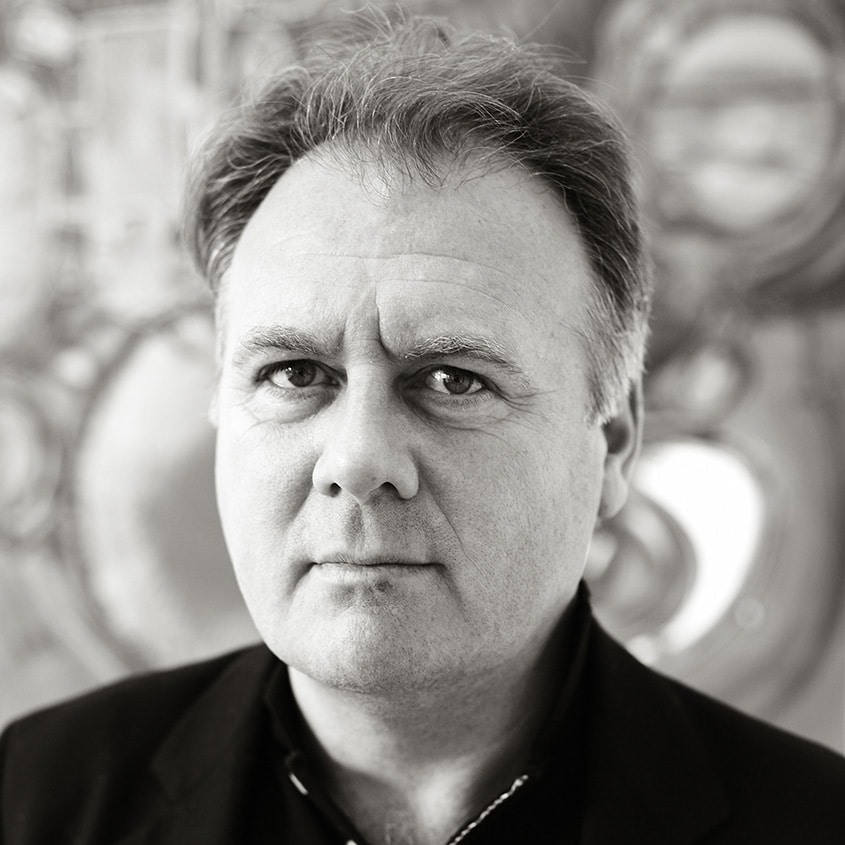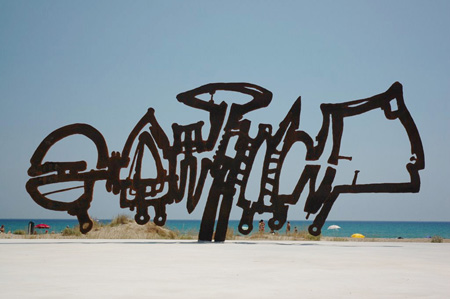Le Musée du sable was established in the 1960s along the beach walk in Le Barcarès and comprises a collection of sculptures by about 40 artists, silhouetted against the azure blue waters of the Mediterranean Sea. The current mayor of Le Barcarès realised the cultural heritage that the town was sitting on and took the initiative to renovate the works of art that bear clear witness to the powers of nature. Prior to the re-inauguration in 2008, Patrick Chappert Gaujal was asked to join the previous generation of artists and make his mark in the town’s art history.
Chappert-Gaujal wanted to create a large and solid sculpture that contributes to the continuity and extension of the permanent sculpture collection. The result was a three-metre high and seven-metre long sculpture made of iron that he is allowing to rust. The rust plays with the light and makes the sculpture more alive, so that it shifts from golden-red at dawn and dusk to black in the bright daylight.
We have followed Patrick Chappert-Gaujal through his artistic career, from his imaginative paintings in pastels, to his beautiful Totem (painted sculptures made of driftwood that the sea washed up onto the shore), followed by refined black-and-white drawings, and now his most recent work: iron and steel sculptures with clean lines. He has varied his choice of materials, but his typical design identity is easily recognisable, even though it has been developed and refined through the different techniques and materials.
Chappert-Gaujal has found a new form of expression that he has developed further, and we now have the pleasure of being able to exhibit some of his magnificent iron sculptures as our first exhibition this autumn.
The artist himself describes his sculptures as a balance between filled and empty spaces, and they draw your gaze to both the solid shapes and the spaces within the sculpture.




